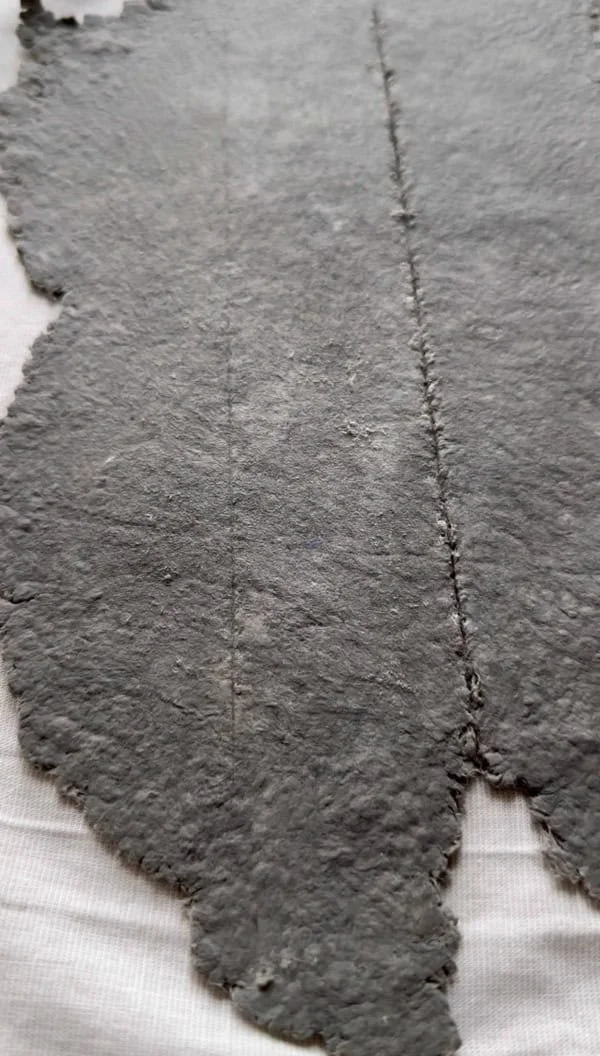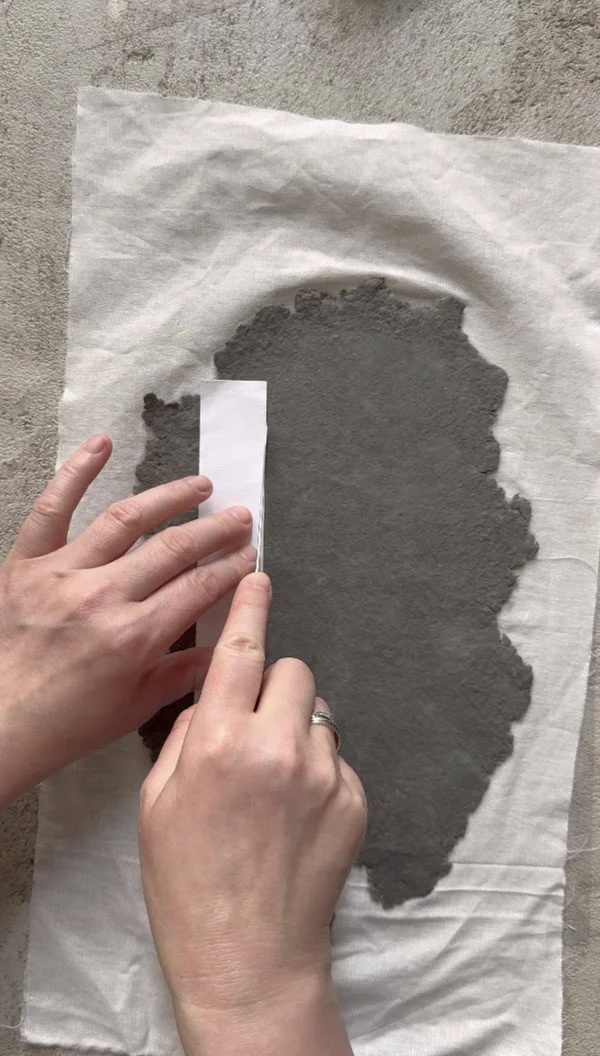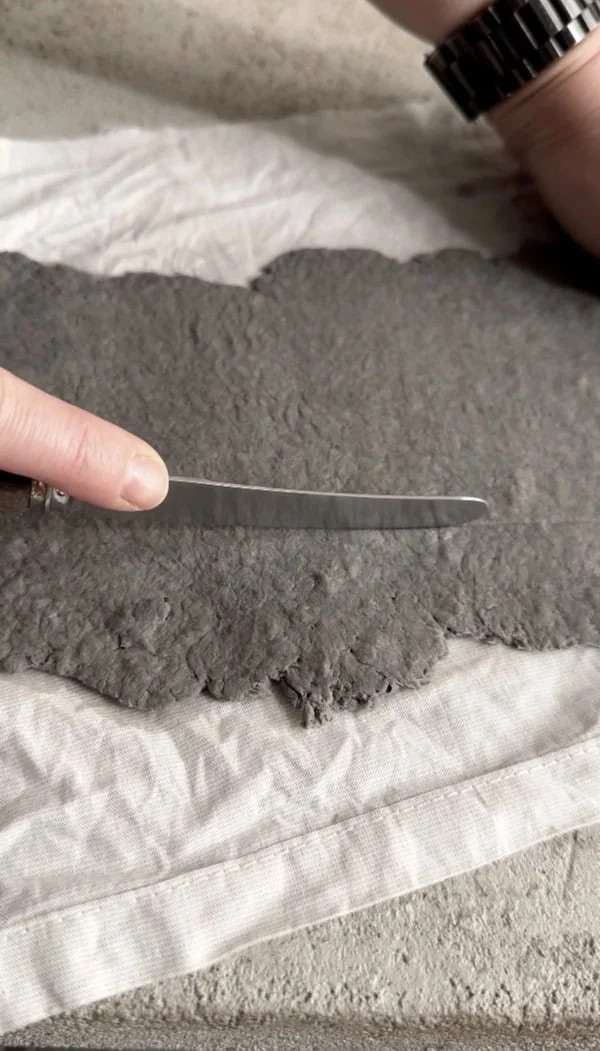How to Draw Guiding Lines in Paper Pulp
When working with paper pulp, there's often a need to mark subtle guiding lines — to plan shapes, divide surfaces, or prepare for cutting elements later. Traditional drawing tools like pens or markers don’t really work here. Either they don’t leave a mark on the soft surface at all, or they leave one that’s too strong, permanent, and disrupts the natural texture of the material.
Instead, a simple but very effective solution is to use a smooth knife with a rounded tip — like a butter knife. This kind of tool lets you draw directly into the pulp without adding color or damaging the surface. It’s a clean, subtle way to make temporary markings without leaving unwanted traces.
What matters most is how you guide the blade: it should lie almost flat against the surface and glide gently with minimal pressure. Holding the knife too upright or at a steep angle can tear the fibers and damage the surface instead of leaving a clean guide.
This technique gives you full control and helps preserve the aesthetic of your piece. It's perfect when you need markings that are temporary, precise, and easy to adjust — without any risk of lasting marks.



